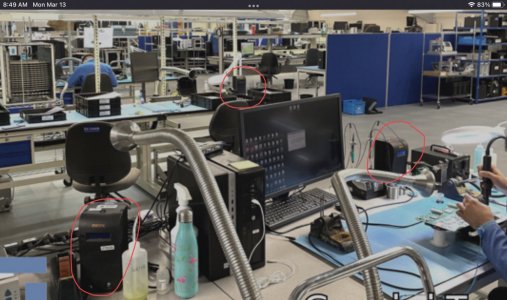I'm going to respectfully disagree. For the work you are describing I would actually avoid the stations with the temperature adjustment. I would also avoid the lead free solder. Chances are you will run the tip too hot and destroy the tip. The Weller without the adjustment regulates well, just use good quality leaded solder (63/37) and it will work much better then the lead free for what you are doing. I have been using the same tip on the WTCP for a very long time and it still works very well. Do NOT under any circumstances buy cheap no name solder especially the made in China eBay/Amazon stuff most of it is so bad it wont solder with a $1000 work station. Kester is good if you're looking for a proven brand.
Most of the higher end soldering stations use technology that actually regulates at the tip not via a sensor with the inherent delay that requires.
If you were doing a lot of PCB work then you might need to go lead free and use the higher temperatures required. The Metcal stations I use don't have a temperature adjustment, that is accomplished with selection of the tip at the tip and this method regulates faster and to tighter tolerances. If you ever visit a PCB assembly house chances are you will see nothing but Metcal and possibly Pace.
Key word here is LEAD FREE not LEADED 63/37.
The people that have issues with lead free have not adapted to what is required and it is a learning curve to some extent. Once you have it figured out it is just as simple as leaded without the lead poisoning and meeting ROHS requirements. I stopped lead 2004 and back then the costs to switch where a lot higher and more difficult.
I use a Weller WD1M it is my work horse that has heat tracing built into the sensor for QC tracking. You can get a full heat trace of as the tip heats and cools during soldering (when you first apply the tip to the work, heat sink, first apply the solder, heat sink, remove the tip, heat rise). Depending on the size of the heat sink, the response can be less than one second to several in either direction, with temperature max ranges (I solder some very large items which have a high heat absorption rate) if set at 720F -20F on application (this is the initial heating period of the work) to +35F on lift (this is the point when the tip is removed from the work and the iron is still applying power, fastest response is in the heat cycle portion as it strives to keep the temp to spec, on lift you rely on air temp to cool which takes a little longer. During the actual soldering no variation.
Weller is one good manufacturer.
JBC is another (believe it or not it was my first choice until I found KOKI solder at which point solder solved the issue and Weller since an upgrade was require the less expensive choice).
Metcal is another.
All of these manfacturers have gone to tip (ie temp sensor in the heating element) sensing digital display feed back systems as Lead Free causes issues if run too hot or too cold.
Too cold is easy as you get cold joint or delaminate the substrate during a slow heating cycle for too hot you have several issues, tip detinning (basically your tip is toast), tip internal erosion (in part fault of the solder composition, hence using the right lead free) when this happens the lead free actual desolves the internal of the tip material and you end up with a void underneath the tip skin, this can have two effects tip explosion with hot molten solder flying all over the place (eyes being the general target by chance), tip collapse (basically you tip is toast, final is a frosted joint as because the solder is overheated and resulting in funny cooling and micro cracking in the joint which results in joint failures (also happens with too cold soldering).
I get all my info directly from the Manufacturers rep and he doesn't sell soldering stations.
As to 63/37 this is lead solder and here as I mentioned earlier just about anything works from a $10 pencil to $2500 Station as long as it has heat. As I also said before I started with lead and used the highest temps possible even on the finest traces and wires (fast hand eye coordination). Lead Free does not follow these principles and proper technique must be used to get proper joints that don't fail.
As recommended by others (and myself) for the price the Weller WE101NA for CDN$164.30 delivered is a great station and far exceeds what most need.
Go Lead free, learn, adjust, master and be safe.
As a foot note I also have a Weller WD2 which looks identical to the WD1 but has 2 ports and 160watts of power, allowing 2 individually controlled upto 80 watt attachments or one 160 watt soldering pencil (I have a 150 watt pencil), before anyone asks yes it is light slim and easy to handle just a shade larger than the standard 20-80 watt pencil), but my 80 watt is the work horse for everything.

 www.kijiji.ca
www.kijiji.ca





